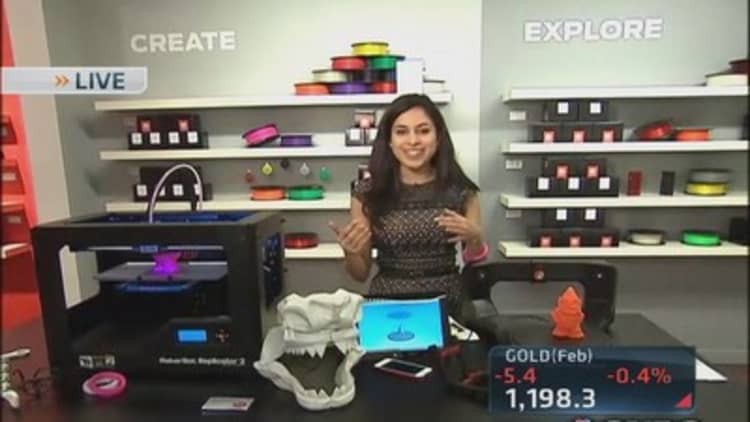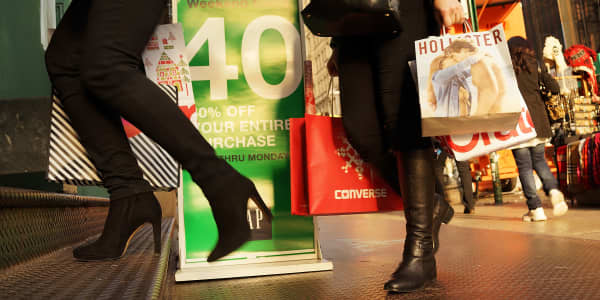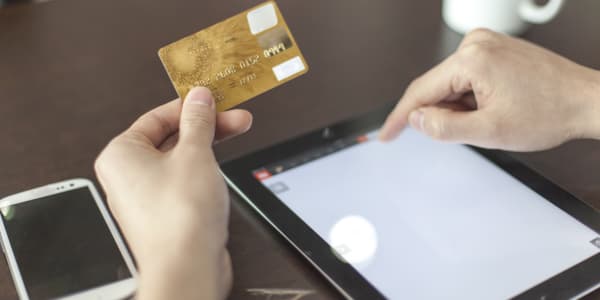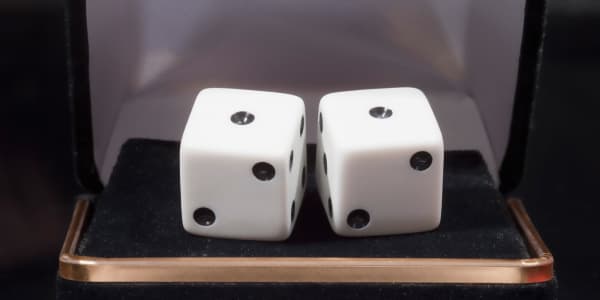
Although 3-D printing has been a breakout tech story this year, the real question industry watchers have is whether shoppers will put a 3-D printer under their Christmas tree.
Sales of consumer 3-D printers have soared in recent years. The industry is still in the early-adopter phase, but makers are moving to convince people that the technology has a place in their homes.
The technology for 3-D printing, which builds objects layer by layer, has been around since the 1980s, but the desktop printers hit shelves only recently.
The consumer segment accounted for just 6.5 percent of all 3-D printer sales in 2012, according to research firm Wohlers Associates. The industry generated the lion's share of its $617.5 million of revenue from the sale of industrial machines.
Still, makers of 3-D printers sold 35,500 consumer units last year, up from just 355 in 2008. Sales could double, to about 70,000, this year, according to Credit Suisse.
(Read more: 3-D gifts for do-it-yourselfers)
Stratasys, which bought MakerBot earlier this year, opened stores in Boston and in Greenwich, Conn., before the holidays. Retailers including Wal-Mart Stores and Amazon sell 3-D printers online, but MakerBot expects that consumers' having physical contact with them will be a game changer.
"MakerBot loves having retail stores because it allows people to see, touch and feel 3-D printing," said Jennifer Lawton, president of MakerBot. "We're seeing people come in who have never even heard of 3-D printing and walking out with a 3-D printer."
According to sales associates, the stores are attracting not just architects, engineers and entrepreneurs but parents looking to enhance their kids' skills in science, technology, engineering and math.
Andrew and Lindsay Kinkead brought their 12-year-old son Jack to MakerBot's Greenwich location so he could test-drive the design software and machines. The couple like that 3-D printing lets Jack explore mathematical concepts and pursue his interest in engineering.
"To keep him away from video games and have him do something using educational skills is so exciting to me," said Lindsay Kinkead. "This is a perfect fit for our family. I see it being a part of our life sometime soon."
(Read more: What investors need to know about 3-D printing)
The Kinkeads said they thought $2,200 a reasonable amount to spend on MakerBot's Replicator 2 printer.
The question is whether enough households will share that sentiment.
More options are becoming available for those that don't. Make magazine tested 23 models for its "Ultimate Guide" to 3-D printing this year, up from 15 last year.
Printrbot sells its entry-level Printrbot Simple for $399, or $299 unassembled. The model earned Make's endorsement as best value. Solidoodle has four models that range from $599 to $999.
At the intermediate price point, Cube printers, made by Stratasys' rival 3D Systems, start at $1,299. 3D Systems doesn't have its own retail shops but sells Cube printers at Staples.
(Read more: 10 hot gifts for the gadget lover)
No matter the make or price point, consumers need to be aware that 3-D printers are tools, said Anna Kaziunas France, digital fabrication editor of Make magazine. Like any tool, they come with a learning curve and require maintenance—things that can deter some consumers.
"Right now they're tools for people who want to make things," said Kaziunas France. "Adoption will be limited to people who are interested in creating things, rather than people who want to be entertained."
Terry Wohlers, president of consulting firm Wohlers Associates, expects that makers and hobbyists will continue to drive sales, while average consumers will go to stores to have products printed.
"We believe there is a consumer market and a very big one for the technology, but it won't be machines running at home," he said. "That will be the exception."
New York-based Shapeways focuses on filling 3-D printing orders from customers, and just this month, MakerBot launched an on-demand service at its retail locations.
Schools are also an opportunity for families to try out 3-D printers.
MakerBot recently partnered with crowdfunding site donorschoose.org to help educators raise money to buy Replicator 2 printers for classrooms. The program funded more than 500 printers its first month.
Rush Hamilton, a math teacher at Pine Point School in Stonington, Conn., bought a Replicator 2 at the Greenwich store for his school. Seventh-grade students at Pine Point will use it to print model homes they create in drafting class.
Hamilton said he thinks the ability to actually hold their creations will motivate students.
It remains to be seen whether 3-D printing in the classroom will motivate parents to invest in a printer.
—By CNBC's Tom DiChristopher. Follow him on Twitter @tdichristopher.





